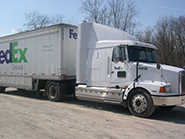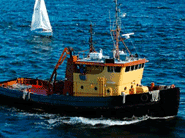Oil Analysis Results Descriptions
The following is a list of standard tests that come with your Wear Check USA oil analysis kits that Kleenoil USA sells:
- Viscosity – Viscosity is defined as an oil’s flow characteristics at a given temperature in relation to time. It may also be described as an oil’s resistance to flow. The unit of viscosity is designated as the stoke. WearCheck USA reports viscosity in centistokes, which is one one-hundredth of a stoke. Viscosity is categorized by the rate of flow into what are called viscosity grades. The slower the flow, the higher the grade. The level of cohesion between the molecules of oil determines the grade of viscosity. Cohesion is the force that holds any substance together. Molecules of high viscosity hold themselves together with more force than molecules of lower viscosity oils. Oils with high cohesion of molecules are heavier, or thicker than oils with a low cohesion of molecules. Using an oil which is too heavy provides insufficient lubrication because cohesion of the oil molecules between each other is so high, it will not adhere to moving parts. Using an oil which is too light causes insufficient lubrication because the cohesion of molecules between each other are too weak to build a sufficient layer of oil between moving parts.
- Water – Water is reported as percent volume, and it’s source can range from atmospheric condensation to internal coolant leaks in liquid cooled systems. Water reduces the oil’s film strength causing friction and the welding of moving parts.
- Fuel Dilution – Fuel dilution is reported as percent volume on any liquid fueled engine. Dilution of oil results in lower oil lubricity, overfilling of engine sump, lower miles per gallon and loss of power.
- Total Acid Number (TAN) – TAN is the number of milligrams of potassium hydroxide required to neutralize one gram of oil. It indicates the amount of acid and acidic constituents in the oil. An increase in TAN over a lubricant’s service life typically indicates lubricant oxidation or contamination with acidic products.
- Total Base Number (TBN) – TBN indicates the level of alkalinity in an oil sample, which indicates the ability of the oil to neutralize corrosive acids. It is expressed as the number of milligrams of acid, expressed as potassium hydroxide, required to neutralize one gram of oil.
- Particle Count – Fluid cleanliness is critical in hydraulic and other systems where high pressure and velocity are involved. Excessive fluid particulate contamination is a major cause of failure of hydraulic pumps, motors, valves, pressure controls, and fluid controls. Particle count measurement is recommended by most equipment and hydraulic component manufacturers. Particle counts consist of counting and classifying particles in the oil. The results are reported in six size categories: >2, >5, >15, >25, >50, and >100 microns. Also included is a three tier ISO Code, a numeric rating system which gives a reference for relative contamination of fluid.
- Water by Karl Fischer – Where small amounts of water are critical to machine performance, a water by Karl Fischer test is recommended. This test accurately measures water contents as low as 20-ppm. In a refrigeration compressor, excessive water together with oil and freon accelerates the formation of acids.
- Fuel Soot – Measured in percent (%) volume, fuel soot is minute particles composed of soft carbon. It is a product of diesel fuel combustion resulting from blow-by, low temperature and overload operation, each air/ fuel mixture, excessive idling and poor ignition. Soot levels reveal the engines overall combustion efficiency. The effect of fuel soot on engines lubricating system and engine performance are many. It greatly reduces lubricating qualities of the oil by thickening the oil and impeding flow. Soot robs an engine of power, it causes a decrease in fuel economy and it decreases engine life by causing accelerated wear through abrasive action.
- Direct Reading Ferrographs (DR Ferrography) – Measures the concentration of the iron wear particles in lubricating fluid. The procedure gives a value corresponding to particle sizes at >5-microns (large) and a value corresponding to particle sizes at <5-microns (small). When subsequent readings indicate elevated values, an abnormal wear condition can be expected. DR Ferrography is used on reduction gearboxes in the WearCheck USA Program.
- Metals – The spectrographic analysis of the sample consists of nineteen basic metals found in used oil. Each metal can be related to specific additives found in the oil or the makeup of a specific part of a machine. From the wear metals that show high amounts, specific types of problems can be diagnosed.
Elemental Analysis, or Spectroscopy, identifies the type and amount of wear particles, contamination and oil additives. Determining metal content can alert you to the type and severity of wear occurring in the unit. Measurements are expressed in parts per million (ppm).
Wear Metals
Combinations of these Wear Metals can identify components within the machine that are wearing. Knowing what metals a unit is made of can greatly influence an analyst’s recommendations and
determine the value of elemental analysis.
Contaminant Metals
Knowledge of the environmental conditions under which a unit operates can explain varying levels of
Contaminant Metals. Excessive levels of dust and dirt can be abrasive and accelerate wear.
Multi-Source and Additive Metals
Additive and Multi-Source Metals may turn up in test results for a variety of reasons. Molybdenum, antimony and boron are additives in some oils. Magnesium, calcium and barium are often used in detergent/dispersant additives. Phosphorous is used as an extreme pressure additive in gear oils. Phosphorous, along with zinc, are used in antiwear additives (ZDP).
The following is a list of metals and their sources:
|
Wear Metals
| ||||
|---|---|---|---|---|
|
Metal
|
Engines
|
Transmissions
|
Gears
|
Hydraulics
|
| Iron (Fe) | Cylinder Liners, Rings, Gears, Crankshaft, Camshaft, Valve Train, Oil Pump Gear, Wrist Pins | Gears, Disks, Housing, Bearings, Brake Bands, Shaft |
Gears, Bearings, Shaft, Housing
|
Rods, Cylinders, Gears
|
| Chromium (Cr) | Rings, Liners, Exhaust Valves, Shaft Plating, Stainless Steel Alloy | Roller Bearings |
Roller Bearings
|
Shaft
|
| Aluminum (Al) | Pistons, Thrust Bearings, Turbo Bearings, Main Bearings(Cat) | Pumps, Thrust Washers |
Pumps, Thrust Washers
|
Bearings, Thrust Plates
|
| Nickel (Ni) | Valve Plating, Steel Alloy from Crankshaft, Camshaft, Gears from Heavy Bunker Type Diesel Fuels | Steel Alloy from Roller Bearings and Shaft |
Steel Alloy from Roller Bearings and Shaft
|
N/A
|
| Copper (Cu) | Lube Coolers, Main and Rod Bearings, Bushings, Turbo Bearings, Lube Additive | Bushings, Clutch Plates(Auto/Powershift), Lube Coolers |
Bushings, Thrust Plates
|
Bushings, Thrust Plates, Lube Coolers
|
| Lead (Pb) | Main and Rod Bearings, Bushings, Lead Solder | Bushings(Bronze Alloy), Lube Additive Supplement |
Bushings(Bronze Alloy), Grease Contamination
|
Bushings(Bronze Alloy)
|
| Tin (Sn) | Piston Flashing, Bearing Overlay, Bronze Alloy, Babbit Metal along with Copper and Lead | Bearing Cage Metal |
Bearing Cage Metal, Lube Additive
|
N/A
|
| Cadmium (Cd) |
N/A
|
N/A
|
N/A
|
N/A
|
| Silver (Ag) | Wrist Pin Bushings(EMD’s), Silver Solder(from Lube Coolers) | Torrington Needle Bearings(Allison Transmission) |
N/A
|
Silver Solder(from Lube Coolers)
|
| Titanium (Ti) | Gas Turbine Bearings/Hub/Blades, Paint(White Lead) |
N/A
|
N/A
|
N/A
|
| Vanadium (V) | From Heavy Bunker Type Diesel Fuels |
N/A
|
N/A
|
N/A
|
|
Contaminant Metals
|
||||
|
Metal
|
Engines
|
Transmissions
|
Gears
|
Hydraulics
|
| Silicon (Si) | Dirt, Seals and Sealants, Coolant Inhibitor, Lube Additive(15 ppm or less) | Dirt, Seals and Sealants, Coolant Inhibitor, Lube Additive(15 ppm or less) |
Dirt, Seals and Sealants, Coolant Inhibitor, Lube Additive(15 ppm or less)
|
Dirt, Seals and Sealants, Coolant Inhibitor, Lube Additive(15 ppm or less)
|
| Sodium (Na) | Lube Additive, Coolant Inhibitor, Salt Water Contamination, Wash Detergents | Lube Additive, Coolant Inhibitor, Salt Water Contamination, Wash Detergents |
Lube Additive, Salt Water Contaminiation, Airborne Contaminate
|
Lube Additive, Coolant Inhibitor, Salt Water Contamination, Airborne Contaminate
|
| Potassium (K) | Coolant Inhibitor, Airborne Contaminate | Coolant Inhibitor, Airborne Contaminate |
Coolant Inhibitor, Airborne Contaminate
|
Coolant Inhibitor, Airborne Contaminate
|
|
Multi Source Metals
|
||||
|
Metal
|
Engines
|
Transmissions
|
Gears
|
Hydraulics
|
| Molybdenum (Mo) | Ring Plating, Lube Additive, Coolant Inhibitor | Lube Additive, Coolant Inhibitor |
Lube Additive, Coolant Inhibitor, Grease Additive
|
Lube Additive, Coolant Inhibitor
|
| Antimony (Sb) | Lube Additive | Lube Additive |
Lube Additive
|
Lube Additive
|
| Manganese (Mn) | Steel Alloy | Steel Alloy |
Steel Alloy
|
Steel Alloy
|
| Lithium (Li) |
N/A
|
Lithium Complex Grease |
Lithium Complex Grease
|
Lithium Complex Grease
|
| Boron (B) | Lube Additive, Coolant Inhibitor | Lube Additive, Coolant Inhibitor |
Lube Additive, Coolant Inhibitor
|
Lube Additive, Coolant Inhibitor
|
|
Additive Metals
|
||||
|
Metal
|
Engines
|
Transmissions
|
Gears
|
Hydraulics
|
| Magnesium (Mg) | Detergent Dispersant Additive, Airborne Contaminant at some sites | Detergent Dispersant Additive, Airborne Contaminant at some sites |
Detergent Dispersant Additive, Airborne Contaminant at some sites
|
Detergent Dispersant Additive, Airborne Contaminant at some sites
|
| Calcium (Ca) | Detergent Dispersant Additive, Airborne Contaminant at some sites, Contaminant from Water | Detergent Dispersant Additive, Airborne Contaminant at some sites, Contaminant from Water |
Detergent Dispersant Additive, Airborne Contaminant at some sites, Contaminant from Water
|
Detergent Dispersant Additive, Airborne Contaminant at some sites, Contaminant from Water
|
| Barium (Ba) | Usually an Additive from Synthetic Lubricants | Usually an Additive from Synthetic Lubricants |
Usually an Additive from Synthetic Lubricants
|
Usually an Additive from Synthetic Lubricants
|
| Phosphorus (P) | Anti-Wear Additive(ZDP) | Anti-Wear Additive(ZDP) |
Anti-Wear Additive(ZDP), EP Additive(Extreme Pressure)
|
Anti-Wear Additive(ZDP)
|
| Zinc (Zn) | Anti-Wear Additive(ZDP) |
Anti-Wear Additive(ZDP)
|
Anti-Wear Additive(ZDP)
|
Anti-Wear Additive(ZDP)
|



